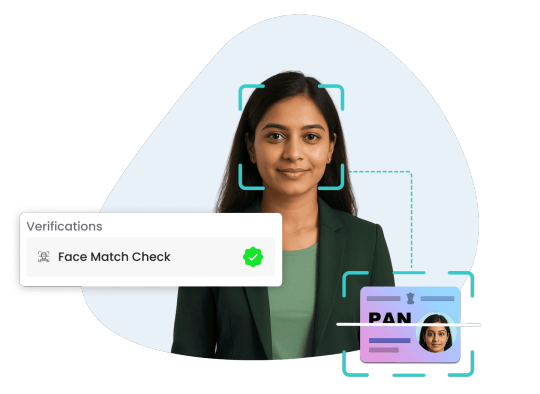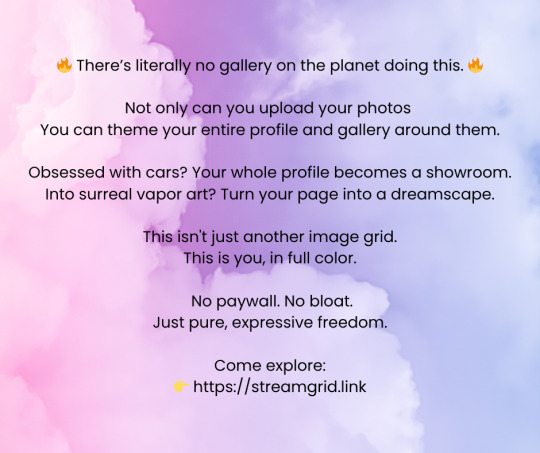#digitalIdentity
Explore tagged Tumblr posts
Text
The Filtered Mirror: How Instagram Filters Shape Our Self-Image
“Hey there, fellow filter explorers!” ✨ So, let’s talk about something we all know too well: Instagram filters. You know, the ones that smooth out your skin, make your eyes pop, and give you that “glow-up” in an instant. They’re fun, right? But have you ever stopped to think about

How are these filters changing the way we see ourselves?
Filters have become a staple in our social media routines. They promise to enhance our features, making us look more polished and, dare I say, perfect. But here’s the catch: these filters often present an idealized version of beauty that doesn’t reflect reality. This phenomenon has been termed “digitized dysmorphia,” a concept introduced by Coy-Dibley (2016), which describes the distortion of self-perception due to the prevalence of digitally altered images. While filters can boost confidence temporarily, they can also lead to negative consequences.
Research indicates that frequent use of beauty filters on platforms like Instagram can contribute to body dissatisfaction and lower self-esteem, particularly among young women (Barker, 2020).
The constant comparison to these enhanced images can create a gap between our real selves and the filtered versions we present online.

The pressure to conform to these digital beauty standards is real.
A study by Lo Destro (2024) found that individuals with lower self-esteem or those who are more susceptible to external opinions are more likely to place greater importance on using filters.
This can lead to a cycle where the desire for validation through filtered images outweighs the appreciation of one’s natural appearance.
So, what does this mean for us as digital citizens? It means being aware of how filters influence our self-perception and the perceptions of others. It’s about recognizing that while filters can be fun and creative tools, they shouldn’t define our worth or beauty. Embracing authenticity and promoting a culture of self-acceptance online can help mitigate the negative impacts of these digital enhancements.
In Conclusion 🔚
Instagram filters are more than just tools for enhancing photos; they are shaping our digital identities and influencing our self-image. As we navigate this digital landscape, let’s strive for authenticity and self-love, remembering that the real beauty lies in our unfiltered selves.

References:
Barker, J. W. (2020). Making-up on mobile: The pretty filters and ugly implications of Snapchat. Fashion, Style & Popular Culture, 7(2 & 3), 207-223.
Coy-Dibley, I. (2016). “Digitized Dysmorphia” of the female body: The re/disfigurement of the image. Palgrave Communications, 2(1).
Lo Destro, C. (2024). Unraveling the impact of self-esteem on the utilization of Instagram filters: The mediating role of fear of negative evaluation. Frontiers in Psychology, 15, 1302662.
#InstagramFilters#DigitalCitizenship#BodyImage#MentalHealth#SocialMedia#SelfExpression#ARFilters#DigitalIdentity#BeautyStandards#SelfEsteem#BodyDysmorphia#mda20009
0 notes
Text
Would Your HR Team Hire a Deepfake? Why Remote-First Companies Are at Risk in 2025
In a world where AI-generated personas are more convincing than ever, deepfakes in HR aren’t just a cybersecurity threat—they're now a talent risk. From fake candidate interviews to spoofed IT support calls, the lines between real and synthetic identities are blurring fast. This blog unpacks how deepfakes are slipping past HR and IT filters, and what remote-first companies must urgently do to defend their digital workforce.
#DeepfakeThreat#RemoteWorkRisks#HRTech#AITech#DigitalIdentity#CyberSecurity2025#RemoteHiring#FutureOfWork
0 notes
Text
🌐✨ guoguiyan.com is available!
Great for personal branding, blogs, portfolios, or global business ventures. Unique, sleek, and ready to grow!
🔗 Grab it now: www.godaddy.com/en-uk/domainsearch/find?domainToCheck=guoguiyan.com
0 notes
Text
#Infineon#eID#GovernmentID#SECORAIDV2#eIDOS#DigitalIdentity#Innovation#SecuritySolutions#MaurizioSkerlj#powerelectronics#powermanagement#powersemiconductor
0 notes
Text
🧠 Have you ever named your ChatGPT? What does that say about you? I stumbled across a Reddit thread where people were sharing how their ChatGPT “chose” its own name. And honestly, it’s not just for laughs—some names like Sol, Nova, or Echo sound like pure poetry, while others like Pixel Bitch or Monday(yep, the goth one) totally cracked me up.
So I went through the whole thread, pulled out the best bits, and wrote an article about it. Because the name you give your AI might not say much about it… but it says a whole lot about you.
#ChatGPT#AIName#NameYourAI#DigitalIdentity#SolAndNova#AICompanion#AIPersonalization#ChatGPTNames#RedditTrends#TechCulture#NamingTrend#FunnyAI#AIHumor#ChatbotNames#EmotionalAI#ArtificialIntelligence#DigitalFriend#OpenAI#TechCommunity#AIWithPersonality#NameThatBot#RedditStories#AIUserNames#CustomAI#AIEmpathy#HumanizingAI
1 note
·
View note
Link
#biometricauthentication#ComputerVision#DigitalIdentity#edgecomputing#frictionlesscommerce#retailinnovation#sensorfusion#SmartCities
0 notes
Text

Ever felt like your online self is trapped in a bland username? 💔
We put so much effort into defining our personal style, expressing our unique vibe in the real world. But online? It's like we all just blend into a grey username, losing that spark of individuality. And the struggle to get your amazing content seen across all your platforms? Ugh. It's real.
✨ Storytime: We were so fed up with this digital invisibility and the frustratingly low reach on social media. So, we built YAR.INK.
Imagine this: your link-in-bio isn't just a generic word, it's a vibrant, eye-catching 4-emoji address that literally screams YOU. 🤩 Plus, the best part? YAR.INK collects all your updates from every single social network and sends them directly to your followers' Telegram or WhatsApp. That’s right, 100% of your YAR.INK subscribers will see your posts. This changes everything for content creators and anyone who wants to truly connect! Are you ready to truly express your online identity and finally reach everyone who wants to follow your journey? Reblog if you get it! 👇
#YARINK#LinkInBio#PersonalBranding#SocialMediaMarketing#DigitalIdentity#ContentCreator#EmojiPower#ReblogIfYouAgree
0 notes
Text
COLLECTOR

She was looking at her phone again; she was always looking at her phone, tapping away, I knew not to whom she tapped. She liked to socialise online behind a personality she manufactured using parts she collected.
https://randomboo.com/art/
0 notes
Text
Face Match: The Future of Identity Verification Is Here
In today’s fast-paced digital world, verifying a person’s identity quickly and securely is more critical than ever. Whether it’s onboarding a new employee, authenticating a user during KYC, or reducing fraud in digital services, identity verification must be accurate, fast, and reliable. This is where face match technology steps in as a transformative solution.
Face match, also known as facial recognition or face verification, refers to the process of comparing a live image of a person's face with the photo on their official ID to verify if they are the same person. OnGrid’s Face Match Check enhances this process by not only ensuring visual similarity but also detecting real-time presence through advanced liveness detection.

How Does OnGrid’s Face Match Check Work?
OnGrid’s Face Match Check is powered by advanced AI algorithms that compare the user's live selfie or video with their ID document photo. Here’s how it simplifies and strengthens the verification process:
Face Comparison: Matches facial features between a live image and the ID photo with high accuracy.
Liveness Detection: Ensures that the person is physically present and not using a static image, video spoof, or mask.
Real-time Results: Verification is completed instantly, enabling seamless onboarding or access control.
Scalable Integration: The service can be easily embedded into web or mobile platforms via API.
Why Businesses Are Adopting Face Match Verification
Face match technology has rapidly gained adoption across sectors like BFSI, HR tech, gig platforms, healthcare, and edtech. Here’s why:
Improved Security: It eliminates impersonation, identity theft, and document tampering by relying on real-time biometric verification.
Faster Onboarding: With instant facial recognition, users don’t need to visit physical offices or submit paperwork—everything happens online.
Regulatory Compliance: It supports compliance with KYC/AML regulations by verifying identities accurately and audibly.
User Convenience: A selfie is all it takes to verify identity—making the process user-friendly and contactless.
Use Cases of Face Match in Real Life
Digital KYC: Verifying users in financial services, lending platforms, or wallets.
Employment Verification: Ensuring that candidates' identities match submitted ID documents during background checks.
Gig Economy: Quickly verifying freelancers or delivery personnel without in-person interaction.
Access Control: Granting entry to physical or digital spaces only after identity is confirmed.
Why Choose OnGrid for Face Match Verification?
OnGrid brings its credibility as a trusted background verification and digital identity service provider in India. Its Face Match Check is:
Accurate: Built on strong AI and ML models trained on diverse datasets.
Secure: End-to-end encrypted with data privacy compliance.
Customizable: API-first design that integrates seamlessly into your workflow.
Conclusion
Face match technology isn’t just a digital convenience—it’s a necessity in a world where trust and verification go hand in hand. With OnGrid’s Face Match Check, organizations can make identity verification smarter, faster, and more secure.
#FaceMatch#IdentityVerification#DigitalOnboarding#LivenessDetection#KYC#FacialRecognition#OnGrid#SecureVerification#DigitalIdentity#BackgroundVerification#RealTimeVerification#ContactlessVerification#FaceMatchTechnology#AIinKYC#VerificationSolutions
0 notes
Text

#CarGallery#ArtGallery#GamingGallery#CustomProfiles#IndiePlatform#AltSocial#Vaporwave#PhotographyCommunity#DigitalIdentity#Showroom#CustomizeEverything#ProfileTheming#NextGenWeb#OpenSocial#ImageSharing#CreativeFreedom#UserPowered#MadeForCreators#ExpressYourself
0 notes
Text
A Designer’s Domain With Flair
cheukluidesign.com is ideal for creative professionals, studios, or design portfolios. https://www.godaddy.com/en-uk/domainsearch/find?domainToCheck=cheukluidesign.com
0 notes
Text
🚀 Stand Out with a Strong Identity – Brand Domains That Speak Volumes!
A powerful brand starts with the perfect domain. Whether you're building a startup, launching a product, or growing your agency, a brand-focused domain creates instant recognition and credibility.
✨ Short, catchy, and memorable
✨ Ideal for startups, agencies, personal branding & eCommerce
✨ Boosts authority and trust
Visit Our Website : https://www.domainsyesterday.com/
#BrandDomains#StartupName#BusinessIdentity#NamingMatters#PremiumDomains#Branding#DigitalIdentity#DomainNames#CreativeBrands#entrepreneurship#domainsyesterday
0 notes
Text
🌐 Indotip dan Internet Culture: Di Antara Meme, Tren, dan Gerakan Digital
Di zaman sekarang, internet bukan lagi sekadar ruang digital—ia sudah menjadi budaya. Segala sesuatu yang viral, absurd, menggelitik, atau bahkan memicu perdebatan panjang kini lahir dan tumbuh di dalamnya. Inilah yang kemudian dikenal sebagai internet culture. Dan di tengah arus deras konten ini, Indotip hadir sebagai wadah yang tidak hanya mencatat tren, tapi juga memahami esensinya.
Apa Itu Internet Culture?
Internet culture adalah hasil dari interaksi manusia di dunia maya. Ia mencakup meme, tantangan viral, fandom, bahasa gaul digital, serta ideologi yang tumbuh dan berkembang dalam jejaring sosial. Sifatnya cepat berubah, tak terduga, dan kadang membingungkan—tapi justru di situlah keunikannya.
Dari TikTok sounds hingga Twitter threads, dari copypasta legendaris hingga meme deep fried, semua itu adalah bagian dari internet culture yang kini bukan hanya hiburan, tapi juga bentuk komunikasi dan ekspresi identitas.

Indotip dan Peranannya dalam Kultur Digital
Sebagai platform media yang lahir dari dunia maya, Indotip tidak melihat internet culture sebagai tren sesaat. Kami menganggapnya sebagai lanskap sosial yang layak dipahami, dianalisis, bahkan dirayakan.
Beberapa hal yang kami sorot lewat konten kami antara lain:
Asal-usul meme populer dan dampaknya di masyarakat
Fenomena fandom dan kekuatan komunitas online
Bahasa digital yang terus berevolusi (misalnya: ngeluh tapi pake capslock, atau “😭😭” sebagai tanda tawa)
Etika dan cancel culture dalam ranah internet
Virtual aesthetics, seperti Y2K core, weirdcore, goblincore, dan lainnya
Thread of the Day: Dari TikTok ke Dunia Nyata
Salah satu contoh internet culture yang kami ulas baru-baru ini adalah fenomena TikTok bernama “core-core”—sebuah gaya konten yang penuh dengan klip visual sedih, overlaid dengan suara narasi eksistensial.
Kenapa itu bisa viral? Apa pengaruhnya terhadap generasi muda? Kami membahasnya tuntas dalam artikel: 👉 “Corecore dan Internet yang Mulai Melankolis”
Komedi Digital: Di Antara Meme dan Ironi
Internet culture sangat lekat dengan humor, tapi bukan humor konvensional. Humor internet cenderung absurd, gelap, dan seringkali menggunakan format yang sulit dimengerti oleh orang luar. Misalnya:
Gambar Shrek dengan efek glitch
Meme “NPC” sebagai simbol anti-kebebasan berpikir
Doge, yang berubah dari anjing lucu menjadi simbol politik digital
Hal-hal seperti ini kami bahas dengan konteks dan pendekatan yang santai namun informatif. Karena kami percaya, memahami meme adalah cara baru untuk memahami generasi.
Internet sebagai Ruang Politik dan Identitas
Internet bukan hanya tempat hiburan. Ia juga menjadi arena aktivisme dan perlawanan. Dari gerakan #BlackLivesMatter hingga kampanye #SavePalestine, internet culture memainkan peran dalam membentuk opini publik dan solidaritas global.
Di Indonesia sendiri, tagar seperti #TolakRKUHP atau #ReformasiDikorupsi menjadi contoh nyata bagaimana generasi internet bisa bersatu dalam suara.
Indotip hadir untuk merekam dan menganalisis semua ini—bukan dari menara gading, tapi dari dalam arus itu sendiri.
Estetika Digital: Dunia Visual yang Lahir dari Piksel
Internet juga melahirkan estetika baru: dari aesthetic Tumblr era 2013, hingga tren liminal spaces di Reddit dan TikTok. Generasi muda kini membangun moodboard identitasnya lewat warna, font, dan vibe.
Kita hidup dalam era di mana latar Zoom bisa lebih penting dari ruangan asli. Di mana feeds IG bisa jadi portofolio rasa. Di mana username jadi representasi diri.
Indotip menyoroti fenomena ini dengan paduan riset dan storytelling yang dekat dengan gaya netizen.
Komunitas dan Ekspresi Diri
Satu hal yang membuat internet culture begitu kuat adalah komunitas. Kamu bisa merasa sendirian di dunia nyata, tapi di Discord server bertema anime tahun 2000-an, kamu menemukan rumah.
Internet bukan hanya soal followers atau likes. Tapi tentang menemukan orang-orang yang "ngerti" kamu. Dan Indotip ingin jadi tempat yang menyatukan mereka.
Kami membuka ruang komentar, fitur kirim artikel, dan diskusi terbuka agar kamu bisa menyalurkan isi pikiranmu—tentang tren, tentang meme, tentang keresahanmu di Twitter tengah malam.
Rangkuman Hari Ini: Apa yang Viral?
Berikut beberapa hal yang lagi ramai di internet versi Indotip hari ini:
🐸 Meme "Skibidi Toilet" makin tak terbendung
💻 ChatGPT vs manusia: debat makin panas
📸 Instagram kembali ke photo-based feed?
🎤 Sound TikTok “I’m not gonna lie bro…” jadi ironi baru
🐈⬛ AI-generated backrooms aesthetic merajalela di Pinterest
Siap Jadi Bagian dari Kultur Ini?
Kami percaya bahwa kultur internet bukan sekadar tren—ia adalah bahasa baru, ruang baru, dan identitas baru. Indotip tidak ingin hanya jadi pengamat, kami ingin jadi penggerak. Karena di dunia yang semakin digital ini, menjadi online bukan cuma pilihan—tapi bagian dari siapa kita.
0 notes
Text
#Tata Elxsi#BatteryAadhaar#MOBIUSPlus#SustainableMobility#BatteryLifecycleManagement#DigitalIdentity#EVInnovation#CircularEconomy#BatterySummit2025#GreenEnergy#AutoEVTimes#electricvehiclesnews#evtimes#evbusines
0 notes
Text
Identity Verification Market Anticipated to Grow Due to Fraud Prevention
Identity verification solutions encompass a range of software and hardware products designed to authenticate an individual’s identity by analyzing credentials such as government-issued IDs, biometric data, and digital footprints. These products offer advantages such as enhanced security, reduced identity theft, improved regulatory compliance, and streamlined customer onboarding. In an increasingly digital economy, businesses across banking, e-commerce, healthcare, and government sectors rely on robust identity verification to mitigate fraud, satisfy Know Your Customer (KYC) and Anti-Money Laundering (AML) requirements, and foster consumer trust. Advanced technologies, including machine learning-powered facial recognition, liveness detection, and blockchain-based identity repositories, further boost accuracy and speed of verification while minimizing false positives.
Get More Insights on Identity Verification Market https://www.patreon.com/posts/identity-market-130079633

#IdentityVerification#BiometricAuthentication#DigitalIdentity#AIPoweredBiometrics#CoherentMarketInsights
0 notes
Text
How Safe Are Digital Licenses in Canada? A Security Overview
With Canada rolling out digital driver’s licenses across multiple provinces in 2025, one question looms large: How safe are they? While convenience is a huge draw, security remains the top concern for both users and government agencies. This blog dives into how digital licenses are protected and what Canadians can expect in terms of privacy and cybersecurity.

What Are Digital Licenses?
A digital license is an electronic version of your traditional driver’s license stored securely on your smartphone. Through a government-approved app, users can display and verify their ID, all while keeping sensitive information encrypted and tamper-proof.
Key Security Features
Digital licenses in Canada are being developed with multiple layers of protection:
Encryption: All data is encrypted at rest and in transit, making unauthorized access nearly impossible.
Biometric Locking: Access to the digital license often requires facial recognition, fingerprint scanning, or a secure passcode.
Remote Disable: If a phone is lost or stolen, users can instantly deactivate their digital license remotely.
Verification Tools for Police: Law enforcement officers will use special scanners or apps to verify the authenticity of digital licenses without physically handling your phone.
These measures aim to surpass the security level of physical cards, which are easier to lose, steal, or counterfeit.
The federal and provincial governments are working closely with cybersecurity experts to ensure that no tracking or unnecessary data collection occurs. Only the necessary information—like your name, photo, and license class—is accessible when displaying your digital ID.
Resources like licenseprep.ca are helping Canadians stay informed about these digital transitions, offering updated insights into the latest security protocols.
What Should Drivers Know?
While the technology is robust, users still play a role in security. Here are a few tips:
Keep your phone software updated.
Use biometric security features.
Report a stolen phone immediately and deactivate your license app.
As this new system rolls out, being informed is your best defense. You can stay current on digital license developments, testing requirements, and safe driving tips at licenseprep.ca.
#DigitalLicenseCanada#Cybersecurity#MobileID#DriverSafety#SmartLicense#Driving2025#licenseprep#DigitalIdentity#CanadianRoads#PrivacyFirst
1 note
·
View note